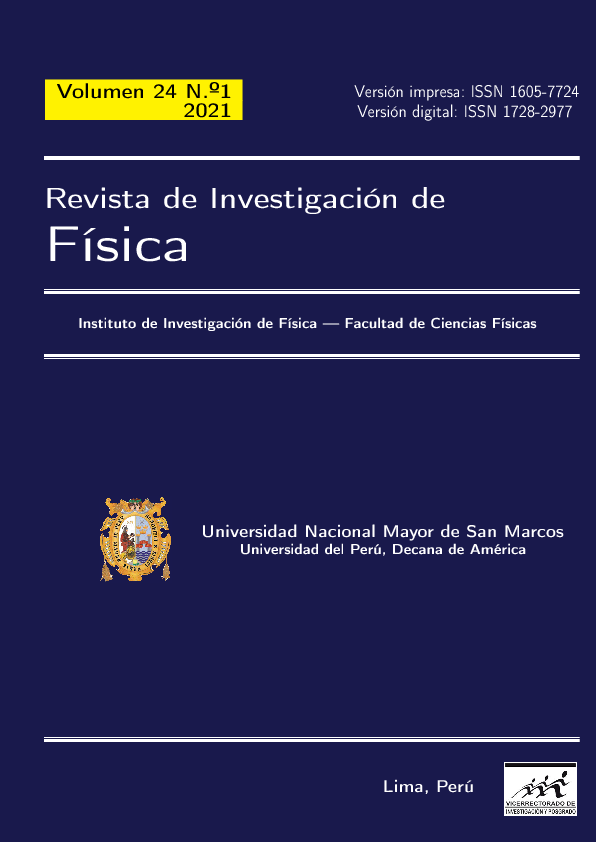Behavior of atmospheric aerosols at the Huancayo Observatory during the 2019 biomass burning events
DOI:
https://doi.org/10.15381/rif.v24i1.20246Keywords:
MODIS, AERONET, AOD, EAAbstract
The characteristics of the aerosol recovered at the Huancayo AERONET station were determined. The study was carried out during the 2019 biomass burning events. Data from the MODIS sensor from the Aqua and Terra satellites and from the CIMEL photometer were processed. The mean, minimum and maximum values of the aerosol optical thickness (AOD) and the Angstrom exponent (EA) have been calculated, as well as the types of aerosols present in the Huancayo Observatory. For the intercomparison of the results, the data from the photometer of the international AERONET network located in Huancayo were used. The mean AOD and EA measured with AERONET respectively is 0.159 ± 0.073 (no unit) and 1.624 ± 0.198 (no unit). The mean values of the Aqua and Terra AOD are respectively 0.088 ± 0.056 and 0.098 ± 0.087. The back-trace analysis carried out using HYSPLIT shows that most of the aerosols that arrive at the Huancayo observatory come from the regions of Ucayali, Huánuco and Pasco, however, there is a small percentage that is generated in the territories of Brazil and Bolivia. By intercomparing the AOD Aqua and Terra with AERONET, the correlation coecients (R) 0.794 and 0.796 were obtained respectively.
Downloads
Published
Issue
Section
License
Copyright (c) 2021 Cesar Victoria, René Estevan

This work is licensed under a Creative Commons Attribution-NonCommercial-ShareAlike 4.0 International License.
THE AUTHORS RETAIN THEIR RIGHTS:
a. The authors retain their trademark and patent rights, as well as any process or procedure described in the article.
b. The authors retain the right to share, copy, distribute, perform and publicly communicate the article published in the Revista de Investigación de Física (for example, place it in an institutional repository or publish it in a book), with an acknowledgment of its initial publication in the Revista de Investigación de Física.
c. The authors retain the right to make a subsequent publication of their work, to use the article or any part of it (for example: a compilation of their works, notes for conferences, thesis, or for a book), provided that they indicate the source. of publication (authors of the work, journal, volume, number and date).














